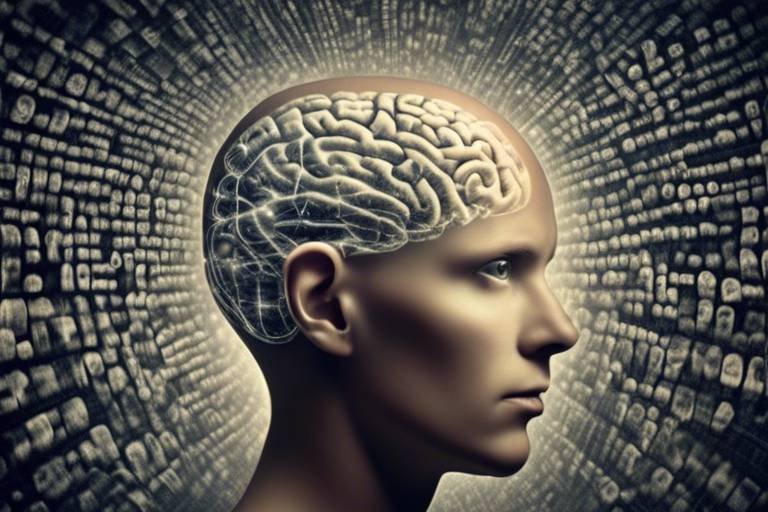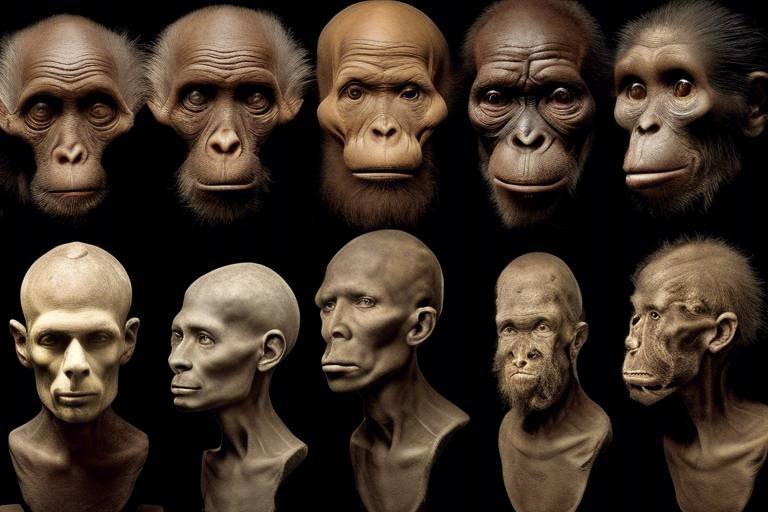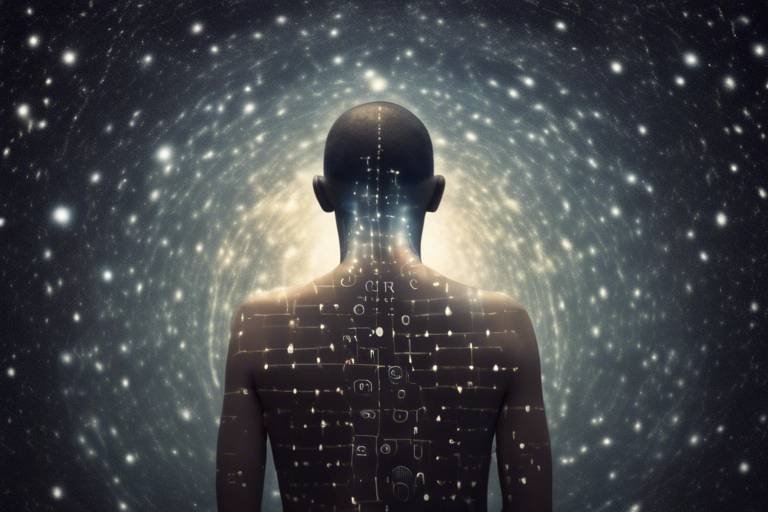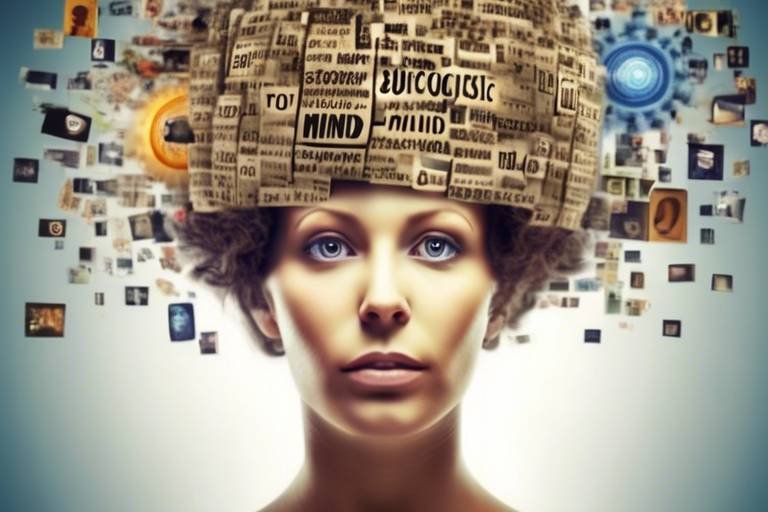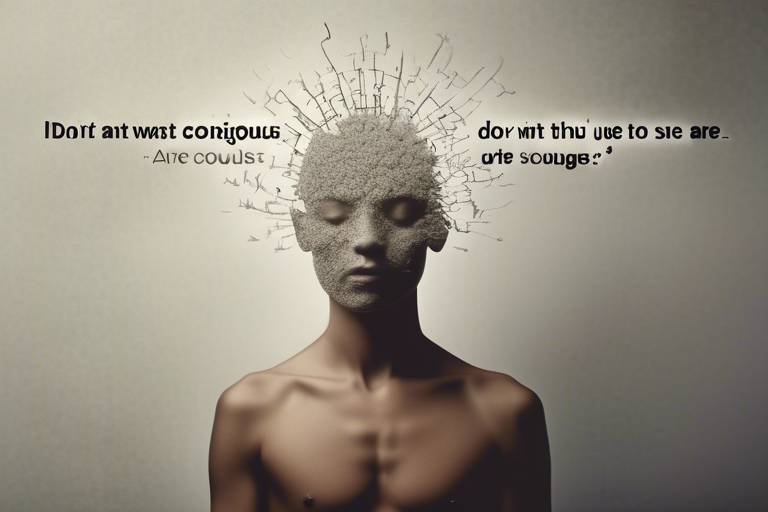Consciousness and Decision Making - How are They Linked?
In our daily lives, we often find ourselves at a crossroads, faced with choices that can significantly impact our future. But have you ever stopped to consider how your consciousness plays a role in these decision-making processes? This article explores the intricate relationship between consciousness and decision-making, examining how our awareness influences the choices we make and the broader implications for both personal and societal outcomes.
Understanding consciousness is crucial for examining its role in decision-making. Consciousness can be defined as the state of being aware of and able to think about one's own existence, thoughts, and surroundings. Various theories attempt to explain this complex phenomenon, from philosophical perspectives to scientific inquiries. Some define consciousness as a spectrum, ranging from basic awareness to higher-order reflective thinking. This understanding of consciousness is significant as it directly correlates with our cognitive processes, shaping how we perceive situations and make choices.
The decision-making process typically unfolds in several stages, from identifying a problem to evaluating the outcomes of our choices. Each stage is influenced by our level of consciousness. For instance, when we encounter a problem, our conscious mind actively engages in analyzing the situation, weighing options, and considering potential consequences. This heightened awareness can lead to more deliberate and informed decisions. Conversely, when we operate on autopilot, our subconscious may take over, leading to less thoughtful outcomes.
Decisions can be categorized into various types, such as routine, strategic, and moral choices. Each type of decision engages our consciousness differently. For example:
- Routine Decisions: These decisions are often automatic, requiring minimal conscious thought. Our habits and subconscious influences play a significant role here, guiding us through familiar choices with little reflection.
- Strategic Decisions: These involve long-term planning and require a higher level of conscious engagement. Here, awareness of potential outcomes and consequences is crucial.
- Moral Decisions: These choices often involve ethical considerations and require deeper reflection. A heightened state of consciousness can lead to more thoughtful and responsible choices in complex situations.
Routine decisions are a part of our everyday lives—think about how you choose what to eat for breakfast or which route to take to work. These choices often become ingrained habits, influenced by our subconscious. While they may seem trivial, these decisions can accumulate and shape our overall lifestyle. Understanding the subconscious influences at play can empower us to make more conscious choices, even in routine matters.
On the flip side, moral decisions can be quite challenging. They often involve ethical dilemmas that require us to weigh our values against the potential impact of our choices on others. Here, a heightened state of consciousness can facilitate a more nuanced understanding of the situation, leading to responsible and empathetic decisions. When we are fully aware of the implications of our actions, we are more likely to choose paths that align with our moral compass.
Numerous factors affect our consciousness, including emotions, social context, and cognitive biases. Emotions, for instance, can cloud our judgment, leading us to make impulsive decisions rather than rational ones. The social context—such as peer pressure or cultural norms—can also play a significant role in shaping our choices. Additionally, cognitive biases can distort our perception of reality, further complicating the decision-making process. By recognizing these influences, we can strive to enhance our awareness and improve our decision-making skills.
Cognitive biases are systematic patterns of deviation from norm or rationality in judgment. These biases can distort our perception and decision-making, leading us to make choices that are not in our best interest. Awareness of these biases is crucial; when we recognize how they operate, we can take steps to mitigate their effects and make more rational, informed choices.
Understanding common cognitive biases, such as confirmation bias (the tendency to search for, interpret, and remember information in a way that confirms one’s preconceptions) and anchoring (the reliance on the first piece of information encountered when making decisions), is essential for improving decision-making. By being conscious of these biases, we can actively work to counteract their influence, leading to more balanced and informed decisions.
To enhance decision-making through increased awareness and mindfulness, consider implementing the following strategies:
- Practice Mindfulness: Engage in mindfulness exercises to become more aware of your thoughts and feelings as you make decisions.
- Seek Diverse Perspectives: Consult with others to gain different viewpoints, which can help mitigate biases.
- Reflect on Past Decisions: Analyze previous choices to understand what worked, what didn’t, and how your consciousness influenced those outcomes.
Q: How can I improve my decision-making skills?
A: You can improve your decision-making skills by practicing mindfulness, seeking diverse perspectives, and reflecting on past decisions to learn from them.
Q: What role do emotions play in decision-making?
A: Emotions can significantly influence decision-making, often leading to impulsive choices. Being aware of your emotional state can help you make more rational decisions.
Q: How can I recognize cognitive biases in my decisions?
A: Familiarizing yourself with common cognitive biases, such as confirmation bias and anchoring, can help you identify when they may be affecting your judgment.

The Nature of Consciousness
Understanding consciousness is crucial for examining its role in decision-making. But what exactly is consciousness? At its core, consciousness is the state of being aware of and able to think about one's own existence, thoughts, and surroundings. It's like the spotlight of our mind, illuminating certain thoughts and feelings while leaving others in the shadows. Think of it as the main stage in a theater where the play of our thoughts unfolds, and everything that happens off-stage remains largely unnoticed.
Various definitions and theories surround consciousness, which can make it a bit of a slippery concept. Philosophers, psychologists, and neuroscientists have all attempted to dissect it, leading to a myriad of interpretations. Some argue that consciousness is a byproduct of brain activity, while others believe it might be a fundamental aspect of the universe itself. This ongoing debate is akin to trying to catch smoke with your bare hands; the more you grasp, the more elusive it becomes.
One widely accepted perspective is that consciousness encompasses different levels or states. For instance, we have:
- Wakefulness: The state of being awake and aware of your environment.
- Self-awareness: The ability to reflect on your own thoughts and feelings.
- Altered states: These can include dreaming, meditation, or drug-induced states that change our perception of reality.
These layers of consciousness play a significant role in our cognitive processes. When we are aware of our thoughts and feelings, we can make more informed decisions. In contrast, when we operate on autopilot, we may fall prey to biases and snap judgments that lead us astray. Imagine driving a car: when you're fully conscious and engaged, you're more likely to make safe and effective driving choices. But if your mind wanders, you might miss a stop sign or take a wrong turn.
The significance of consciousness in decision-making cannot be overstated. It serves as the lens through which we view our choices, shaping our judgments and actions. By fostering a deeper understanding of our conscious state, we can enhance our decision-making abilities. This awareness allows us to break free from habitual patterns and reconsider our options, leading to more thoughtful and deliberate choices.
In summary, consciousness is a complex and multifaceted phenomenon that impacts every aspect of our lives, especially our decision-making processes. By exploring its nature, we can unlock the potential for more informed and conscious choices, benefiting not just ourselves but society as a whole.

The Decision-Making Process
Decision-making is a fascinating journey that we embark on every single day, whether we realize it or not. It’s like navigating through a maze where each turn leads us closer to an outcome, and our consciousness plays a pivotal role in how we traverse this maze. The decision-making process can be broken down into several key stages, each influenced by our awareness and understanding of the situation at hand. From identifying a problem to evaluating the outcomes, every step is intertwined with our level of consciousness.
Let’s start with the first stage: problem identification. This is where we recognize that a choice needs to be made. It’s like standing at the entrance of a maze, looking around and realizing that you need to pick a path. Our consciousness helps us assess the situation, identify the need for a decision, and understand the implications of that decision. Without this awareness, we might wander aimlessly, making choices that don’t align with our goals or values.
Once we’ve identified the problem, we move on to the next stage: information gathering. Here, our consciousness is crucial as we sift through various options and facts. Think of this stage as gathering tools before attempting to navigate through the maze. The more informed we are, the better equipped we’ll be to make a sound decision. This is where our awareness can either enhance our choices or lead us astray, depending on how we interpret the information available to us.
Following this, we enter the stage of evaluating alternatives. This is where the real fun begins! We weigh the pros and cons of each option, considering potential outcomes. Our consciousness plays a significant role here, as it allows us to visualize the consequences of each choice. It’s almost like having a map of the maze that shows us the potential traps and treasures along each path. The clearer our consciousness, the better we can navigate these complexities.
Finally, we reach the decision-making stage. This is where we commit to a choice and take action. However, even at this stage, our consciousness continues to influence us. Are we fully aware of the implications of our decision? Are we considering our values and ethics? It’s essential to reflect on these questions, as they can make all the difference in the outcomes we experience.
To summarize the decision-making process, here’s a quick overview:
| Stage | Description |
|---|---|
| Problem Identification | Recognizing the need for a decision. |
| Information Gathering | Collecting relevant data and options. |
| Evaluating Alternatives | Weighing the pros and cons of each option. |
| Decision Making | Choosing an option and taking action. |
In conclusion, the decision-making process is not just a series of steps; it’s a complex interplay of consciousness, awareness, and reflection. By understanding how each stage is influenced by our level of consciousness, we can make more informed and thoughtful choices that lead to better outcomes in our personal and professional lives. So, the next time you find yourself at a crossroads, remember the power of your consciousness in guiding you through the maze of decision-making!
- What is the importance of consciousness in decision-making?
Consciousness allows us to be aware of our choices, assess the implications, and make informed decisions based on our values and goals. - How can I improve my decision-making process?
Improving your decision-making involves enhancing your awareness, gathering relevant information, and reflecting on potential outcomes before making a choice. - What are cognitive biases, and how do they affect decisions?
Cognitive biases are systematic patterns of deviation from norm or rationality in judgment, which can distort our perception and lead to poor decision-making.

Types of Decisions
When it comes to decision-making, it's fascinating to realize that not all decisions are created equal. Our choices can be broadly categorized into several types, each influenced by different factors and requiring varying levels of consciousness. Understanding these types can illuminate how our awareness shapes our daily lives. For instance, we often find ourselves making routine decisions, which are those automatic choices we make without much thought—like what to have for breakfast or which route to take to work. These decisions are typically driven by habits and subconscious processes. On the other hand, we encounter strategic decisions that demand careful consideration and planning, such as career moves or financial investments. These decisions require a high level of awareness and foresight, as they can significantly impact our futures.
Moreover, there are moral decisions, which often plunge us into deeper ethical waters. These choices compel us to reflect on our values and principles, weighing the implications of our actions on others. For instance, deciding whether to report a colleague's unethical behavior involves not just personal gain but also the broader impact on the workplace environment. Each type of decision engages our consciousness in unique ways, influencing how we perceive options, assess risks, and ultimately choose a path forward.
To further clarify the types of decisions, let's take a look at the table below that summarizes their characteristics:
| Type of Decision | Description | Level of Consciousness Required |
|---|---|---|
| Routine Decisions | Automatic choices made with little thought, often based on habits. | Low |
| Strategic Decisions | Deliberate choices requiring careful planning and consideration. | High |
| Moral Decisions | Choices that involve ethical considerations and the impact on others. | High |
In essence, the types of decisions we face daily are not just a matter of choice; they are reflections of our consciousness and awareness. By recognizing the distinctions among these decisions, we can better navigate our lives and make choices that align with our values and goals. So, the next time you find yourself at a crossroads, take a moment to consider the type of decision you're making and how your consciousness is guiding you in that moment.

Routine Decisions
When we think about , we often imagine the small, seemingly insignificant choices we make every day. These are the decisions that don’t require much thought, like what to have for breakfast or which route to take to work. Interestingly, most of these choices are made almost automatically, driven by our habits and subconscious processes. The brain is wired to save energy, and so it tends to rely on established patterns rather than engaging in deep thought for every little decision. This is where the fascinating interplay between consciousness and decision-making comes into play.
Routine decisions are often influenced by our past experiences and learned behaviors. For instance, if you’ve always had cereal for breakfast, your brain has created a shortcut, making it easier and faster to choose cereal again without much deliberation. This habitual behavior is a prime example of how our subconscious mind operates. It’s like driving a car on a familiar route; you don’t have to consciously think about every turn. Your brain takes over, allowing you to focus on other things, such as listening to your favorite podcast or planning your day.
However, it’s essential to recognize that even these mundane choices can have a significant impact on our lives. For example, consistently choosing unhealthy breakfast options can lead to long-term health issues. When we allow our subconscious to dominate our routine decisions, we might overlook opportunities for improvement or change. This is where being conscious of our choices becomes crucial. By bringing awareness to our routine decisions, we can start to make more deliberate choices that align with our goals and values.
Moreover, the context in which we make these decisions plays a vital role. Social influences, environmental cues, and even emotional states can affect our routine choices. For example, if you’re in a rush, you might opt for a quick coffee instead of a nutritious breakfast. Alternatively, if you’re surrounded by friends who are health-conscious, you might be more inclined to choose a smoothie over a sugary pastry. This highlights the importance of being aware of external factors that can shape our decisions, even when they seem trivial.
In conclusion, while routine decisions may appear simple and automatic, they are deeply intertwined with our consciousness and the broader context of our lives. By practicing mindfulness and reflecting on our daily choices, we can transform these automatic decisions into opportunities for growth and improvement. So, the next time you find yourself making a routine choice, take a moment to pause and consider whether it truly aligns with your aspirations. After all, even the smallest decisions can lead to significant changes over time.
- What are routine decisions? Routine decisions are everyday choices that are often made automatically and require little conscious thought.
- How do habits influence routine decisions? Habits shape our routine decisions by creating mental shortcuts that allow us to make choices quickly based on past experiences.
- Can routine decisions impact my life? Yes, even small routine decisions can significantly affect your overall well-being and lifestyle choices over time.
- How can I become more aware of my routine decisions? Practicing mindfulness and reflecting on your choices can help you become more aware and intentional in your decision-making.

Moral Decisions
Moral decisions are often the most challenging choices we face in our lives. They require us to weigh our values, beliefs, and the potential impact of our actions on others. Unlike routine decisions, which can be made almost instinctively, moral decisions demand a higher level of conscious awareness and reflection. When confronted with a moral dilemma, we find ourselves navigating through a complex landscape of emotions and ethical considerations, often feeling the weight of responsibility on our shoulders.
To illustrate the intricacies of moral decision-making, consider a classic scenario: the trolley problem. Imagine a runaway trolley heading towards five people tied to the tracks. You have the option to pull a lever that redirects the trolley onto another track where one person is tied down. What do you do? This thought experiment highlights how our consciousness shapes our moral reasoning. Some may prioritize the greater good, opting to pull the lever and save five lives at the cost of one, while others may refuse to act, believing that taking a life, even to save more, is inherently wrong.
Such decisions are rarely black and white. They often involve a spectrum of emotions, including guilt, empathy, and fear. The ability to reflect on these feelings is a crucial aspect of heightened consciousness. When we take the time to consider the implications of our choices, we can arrive at more thoughtful and responsible conclusions. This deeper level of awareness allows us to connect with our values and the values of those around us, promoting a sense of social responsibility.
Furthermore, our moral decisions are often influenced by external factors such as cultural norms, societal expectations, and the opinions of others. For instance, in a community that values individualism, one might feel justified in making a decision that prioritizes personal gain over collective well-being. Conversely, in a collectivist society, the same individual may be pressured to make choices that benefit the group. This interplay between consciousness and societal context illustrates how our moral compass is shaped not only by our internal values but also by the world around us.
Ultimately, the journey of making moral decisions is a profound reflection of our humanity. It challenges us to confront our beliefs and the consequences of our actions. By cultivating a greater awareness of our thoughts and feelings, we can navigate these complex moral landscapes with more confidence and integrity. In doing so, we not only improve our decision-making but also contribute to a more compassionate and understanding society.
- What are moral decisions?
Moral decisions are choices that involve considerations of right and wrong, often requiring us to reflect on our values and the impact of our actions on others.
- How does consciousness influence moral decisions?
Heightened consciousness allows individuals to reflect on their emotions and ethical considerations, leading to more thoughtful and responsible choices.
- Can societal factors affect moral decision-making?
Yes, cultural norms and societal expectations can significantly influence how we perceive and make moral choices.
- Why are moral decisions often more complex than routine decisions?
Moral decisions typically involve deeper ethical considerations and emotional responses, making them more challenging and nuanced.

Influences on Consciousness
Consciousness is not a static state; it is a dynamic and fluid entity influenced by a myriad of factors. Understanding these influences can provide us with profound insights into how we make decisions. From our emotional state to the social environment we find ourselves in, each element plays a crucial role in shaping our awareness and, consequently, our choices. Have you ever noticed how your mood can dramatically alter your perspective on a situation? This is a prime example of how emotions can cloud or clarify our judgment.
One of the most significant influences on consciousness is emotion. Emotions can act like a lens, coloring our perception of reality. For instance, when we are happy, we tend to see opportunities where others might see obstacles. Conversely, when we are anxious or sad, we may overlook positive aspects of a situation. This emotional backdrop can lead to decisions that are either more optimistic or more pessimistic, depending on how we feel at the moment.
Another key factor is the social context. Our interactions with others can profoundly impact our consciousness. Think about how your friends’ opinions can sway your decisions, even if you initially felt differently. The need for social acceptance can lead us to conform to group norms, sometimes at the expense of our authentic selves. This phenomenon illustrates how our consciousness is not just a personal experience but is also shaped by the collective consciousness of the groups we belong to.
Additionally, cognitive biases play a pivotal role in influencing our consciousness. These biases are systematic patterns of deviation from norm or rationality in judgment, which can lead us to make decisions based on flawed reasoning. For example, the confirmation bias causes us to favor information that confirms our pre-existing beliefs while ignoring contradictory evidence. Being aware of these biases is essential; it allows us to step back and evaluate our thought processes critically. The more conscious we are of these influences, the better equipped we are to make informed decisions.
In summary, the influences on consciousness are multifaceted, encompassing emotional states, social contexts, and cognitive biases. Each of these elements interacts in complex ways to shape our awareness and decision-making processes. By understanding these influences, we can strive for greater self-awareness and make choices that are more aligned with our true values and goals.
- What are the main influences on consciousness? Consciousness is influenced by emotions, social context, and cognitive biases, among other factors.
- How do emotions affect decision-making? Emotions can alter our perception of situations, leading to more optimistic or pessimistic decisions based on our current emotional state.
- What role do cognitive biases play in consciousness? Cognitive biases can distort our judgment and decision-making by causing us to favor certain information over others, often leading to irrational choices.

Consciousness and Cognitive Bias
When we think about decision-making, it’s essential to recognize that our choices are often clouded by various cognitive biases. These biases act like invisible filters that distort our perception of reality, leading us to make decisions that may not align with our true intentions or best interests. But how does consciousness play into this? Well, the more aware we are of our thought processes, the better equipped we become to challenge these biases.
Cognitive biases are systematic patterns of deviation from norm or rationality in judgment. They can influence our decisions in profound ways, often without us even realizing it. For instance, when faced with a choice, we might unconsciously favor information that confirms our existing beliefs, a phenomenon known as confirmation bias. This is where consciousness steps in—by becoming more aware of our thought patterns, we can begin to question our assumptions and seek out alternative perspectives.
Here’s a quick overview of how some common cognitive biases can impact our decisions:
| Cognitive Bias | Description | Impact on Decision-Making |
|---|---|---|
| Confirmation Bias | Tendency to search for, interpret, and remember information that confirms one’s preconceptions. | Leads to poor decision-making by ignoring contradictory evidence. |
| Anchoring Bias | Relying too heavily on the first piece of information encountered. | Can skew judgment and lead to suboptimal choices. |
| Availability Heuristic | Overestimating the importance of information that is readily available. | May result in misjudgments based on recent experiences rather than facts. |
By shining a light on these biases through conscious awareness, we can start to mitigate their effects. For example, if we recognize that we are falling prey to confirmation bias, we can actively seek out opposing viewpoints and data. This not only enriches our understanding but also leads to more balanced and informed decisions.
Moreover, the social context in which we find ourselves can amplify these biases. Think about it: if everyone around you is making a certain choice, it’s easy to follow suit without questioning whether it’s the right decision for you. Here, consciousness becomes a powerful tool. By being aware of the social influences on our decisions, we can assert our independence and make choices that truly reflect our values and goals.
In essence, the link between consciousness and cognitive bias is a dynamic interplay. While cognitive biases can lead us astray, heightened consciousness empowers us to recognize and counteract these biases. It’s like having a personal radar that helps us navigate the often murky waters of decision-making. So, the next time you’re faced with a choice, take a moment to reflect: are you being influenced by cognitive biases? How can you use your awareness to steer your decision in a more favorable direction?

Common Cognitive Biases
When we talk about decision-making, it’s essential to recognize that our minds are not always the most reliable sources of truth. We often fall prey to cognitive biases—these are systematic patterns of deviation from norm or rationality in judgment. They can cloud our understanding and lead us to make choices that might not be in our best interest. For instance, have you ever made a decision based purely on a gut feeling, only to realize later that it was influenced by a bias? Understanding these biases is like shining a light in a dark room; it helps us navigate our thoughts more effectively.
Let’s explore some of the most common cognitive biases that impact our decision-making:
- Confirmation Bias: This occurs when we favor information that confirms our pre-existing beliefs or hypotheses, while disregarding evidence that contradicts them. Imagine you’re convinced that a particular diet is the best; you might only seek out testimonials that support your view, ignoring studies that suggest otherwise. This bias can lead to poor choices, especially in areas like health and finance.
- Anchoring Bias: This happens when we rely too heavily on the first piece of information we receive (the "anchor") when making decisions. For example, if you see a shirt priced at $100 and then find it on sale for $70, you might think you’re getting a great deal, even if the shirt’s actual value is only $50. This bias can skew our perception of value and lead to unnecessary spending.
- Availability Heuristic: This is a mental shortcut that relies on immediate examples that come to mind. If you’ve recently heard about a plane crash, you might overestimate the dangers of flying, despite statistics showing it’s one of the safest modes of transportation. This bias can lead to irrational fears and decisions.
By being aware of these biases, we can take steps to mitigate their effects on our decision-making processes. For instance, when faced with a significant choice, we can actively seek out diverse perspectives and challenge our initial thoughts. It’s like being a detective in your own mind—questioning the evidence, looking for clues, and piecing together a more accurate picture of reality.
In conclusion, understanding cognitive biases is not just an academic exercise; it’s a vital skill that can profoundly impact our lives. By recognizing the forces that shape our decisions, we can strive for more rational, informed choices that align with our true values and goals. So, the next time you find yourself making a decision, pause for a moment and ask yourself: Am I being influenced by any cognitive biases? This simple question could lead you to make a significantly better choice.
Q: What are cognitive biases?
A: Cognitive biases are systematic patterns of deviation from norm or rationality in judgment, affecting the decisions we make.
Q: How can I identify my cognitive biases?
A: Self-reflection and seeking feedback from others can help you identify cognitive biases. Additionally, educating yourself about common biases can enhance your awareness.
Q: Can cognitive biases be eliminated?
A: While they cannot be entirely eliminated, awareness and mindfulness can help mitigate their effects on decision-making.
Q: Why is it important to understand cognitive biases?
A: Understanding cognitive biases is crucial for making more informed and rational decisions, ultimately leading to better personal and societal outcomes.

Strategies for Better Decision-Making
Making decisions can often feel like navigating a maze—one wrong turn, and you might find yourself lost. But what if I told you that there are effective strategies to enhance your decision-making skills? By increasing your awareness and practicing mindfulness, you can transform your choices from hasty reactions to thoughtful actions. Here are some powerful strategies that can help you make better decisions.
First and foremost, embracing mindfulness is crucial. Mindfulness is the practice of being present in the moment, which allows you to observe your thoughts and feelings without judgment. When faced with a decision, take a moment to pause and breathe. This simple act can create a space for clarity, enabling you to assess your options more rationally. You might even find that your initial emotional response dissipates, leaving room for more logical reasoning.
Another effective strategy is to define your goals clearly. What do you want to achieve? By establishing clear objectives, you can align your decisions with your long-term aspirations. For instance, if you're deciding whether to accept a new job offer, consider how it fits into your career goals. Does it provide opportunities for growth? Does it align with your values? By answering these questions, you can make a choice that resonates with your personal mission.
Additionally, seeking diverse perspectives can significantly enrich your decision-making process. Engaging with others who have different experiences and viewpoints can provide insights you may not have considered. Whether it's discussing with friends, family, or colleagues, gathering input can illuminate blind spots in your thinking. Remember, collaboration often leads to more informed and well-rounded decisions.
Moreover, it’s important to evaluate potential outcomes before finalizing your decision. Consider creating a simple pros and cons table to visualize the consequences of your choices. This method not only helps in organizing your thoughts but also allows you to weigh the benefits against the drawbacks effectively. Here’s a quick example:
| Decision | Pros | Cons |
|---|---|---|
| Accepting a Job Offer |
|
|
Finally, trust your instincts. Sometimes, your gut feeling can provide valuable insights that logic alone may overlook. While it's essential to analyze the facts, don't underestimate the power of intuition. After all, your subconscious mind is constantly processing information, and it can guide you in ways you might not consciously recognize.
In summary, enhancing your decision-making skills is a journey that involves mindfulness, clarity, collaboration, evaluation, and intuition. By implementing these strategies, you can navigate the complexities of decision-making with greater confidence and awareness. Remember, every decision is an opportunity for growth, so embrace the process!
Q: How can mindfulness improve my decision-making?
A: Mindfulness helps you stay present and reduces impulsive reactions, allowing for more thoughtful and rational decision-making.
Q: Why is it important to seek diverse perspectives?
A: Different viewpoints can provide new insights and help you see potential consequences you might have overlooked, leading to more informed choices.
Q: How do I know if I'm trusting my instincts too much?
A: While intuition is valuable, it's essential to balance it with logical reasoning. If a decision feels overwhelmingly right but lacks factual support, consider revisiting the facts.
Frequently Asked Questions
- What is consciousness?
Consciousness is the state of being aware of and able to think about one's own existence, thoughts, and surroundings. It's like the spotlight of your mind, illuminating the thoughts and feelings that shape your reality.
- How does consciousness influence decision-making?
Consciousness plays a pivotal role in decision-making by allowing individuals to evaluate options, consider consequences, and reflect on personal values. It’s akin to having a navigation system that helps you steer through the complexities of choices.
- What are the different types of decisions?
Decisions can be categorized into routine, strategic, and moral choices. Routine decisions are often automatic, while strategic decisions require deeper thought, and moral decisions involve ethical considerations. Each type engages consciousness in unique ways.
- What are cognitive biases?
Cognitive biases are systematic patterns of deviation from norm or rationality in judgment. They can distort our perception and lead to flawed decision-making, much like wearing glasses that alter your view of reality.
- How can I improve my decision-making?
Improving decision-making involves increasing awareness and mindfulness. Strategies include reflecting on past decisions, considering multiple perspectives, and being aware of cognitive biases that might cloud your judgment.
- What role do emotions play in decision-making?
Emotions significantly influence decision-making by affecting how we perceive options and outcomes. They can either cloud our judgment or provide valuable insights, much like a compass that can guide us through uncertain terrain.
- Can consciousness be trained?
Yes, consciousness can be trained through practices like mindfulness meditation, self-reflection, and cognitive behavioral techniques. These practices enhance awareness, helping individuals make more informed and conscious choices.





